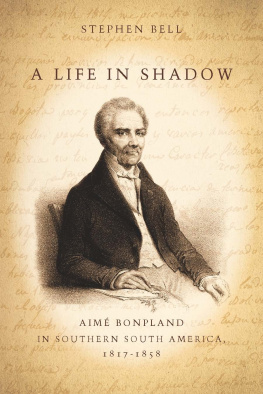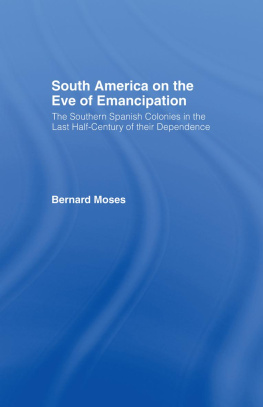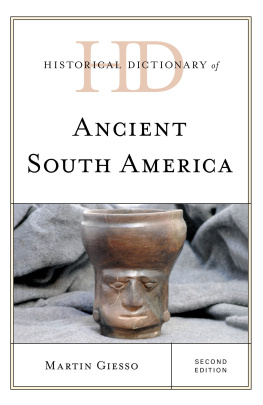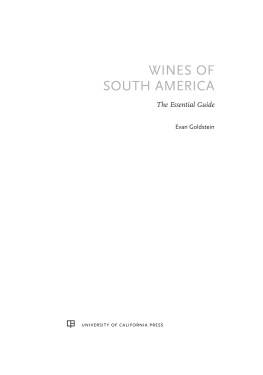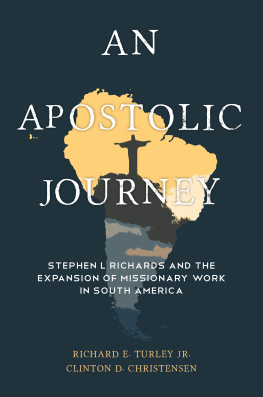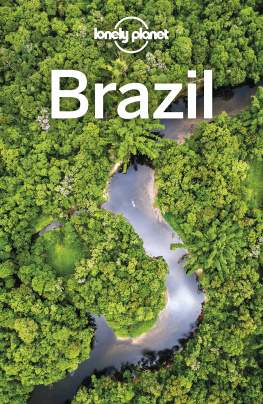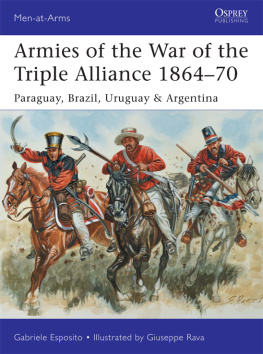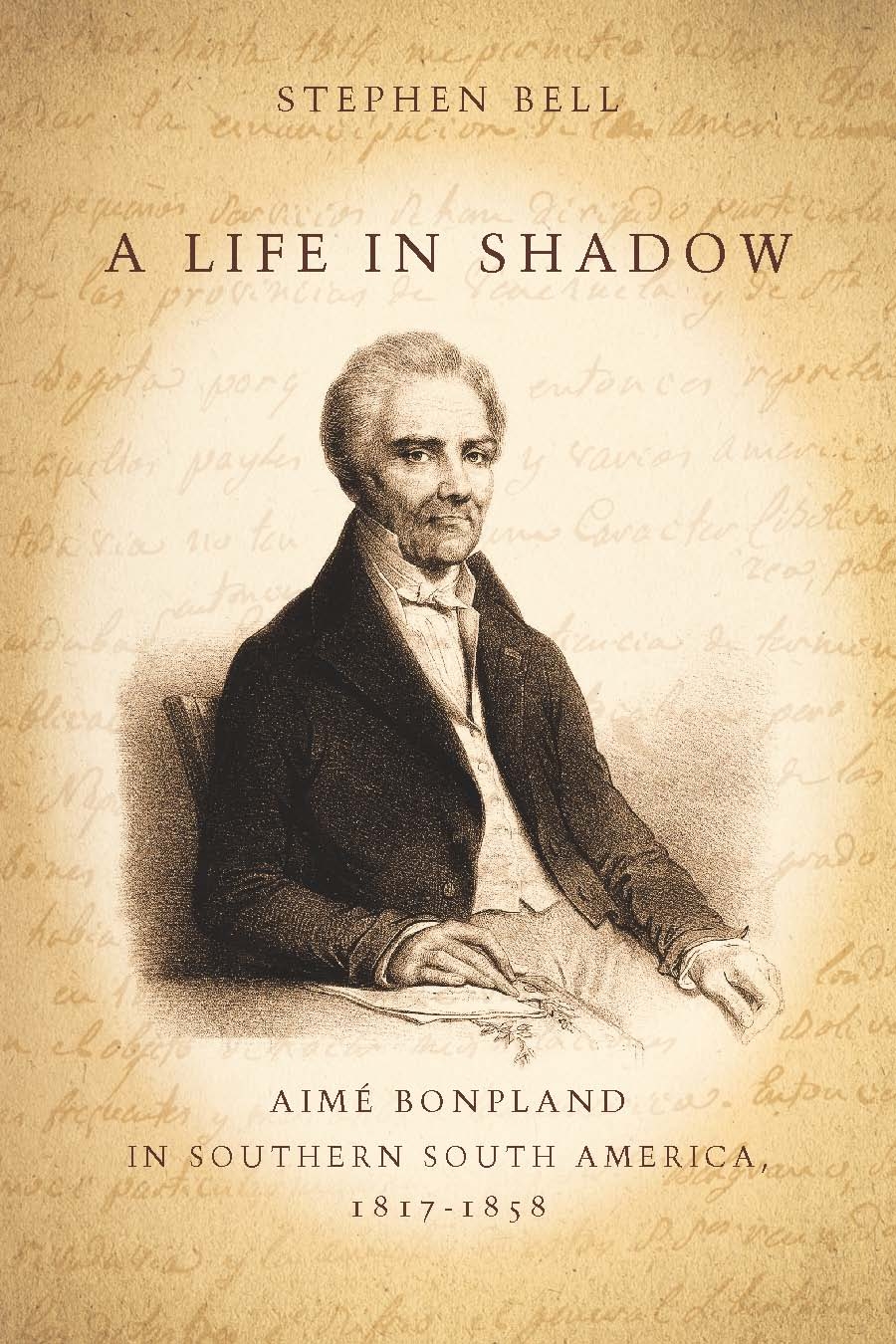Acknowledgments
The writer Sybille Bedford argued that to remain monolingual reduced the mind to the confines of a tramline. The subject of this book was somebody who most certainly broadened his cultural experience as a young man through learning Latin and Spanish, and through much pondering of the significance of Native American words. His trajectory laid out research challenges which it has been a distinct pleasure to navigate. My first major debt goes to the Social Sciences and Humanities Research Council of Canada. The bulk of the financial support for archival research in Europe and in South America came from this institution. In addition, the support of the University of California proved crucial for filling in gaps as the research unfolded.
I extend my thanks to all those who helped shape this work in their various ways. The seed of the project germinated while I was still a graduate student, when consulting the tantalizingly imprecise category of diverse documents in the Arquivo Histrico do Rio Grande do Sul, Brazil. A conversation with Jock Galloway, my graduate mentor at the University of Toronto, brought the response that there might be a book in it. As often, he was right, and his encouragement is gratefully noted. In terms of method, I worked from the better cataloged to the lesser known, beginning in Paris and La Rochelle. In France, I especially appreciated the guidance of the late Frdric Mauro, who invited me to participate in his seminar on the economic history of Latin America. In addition, the late Charles Minguet made many useful suggestions. Guy Martinire was always enthusiastic about the project, and his Bonplandista graduate students, Nicolas Hossard and Cdric Cerruti, both offered much spirited discussion.
Working across many countries (Argentina, Brazil, Canada, France, Germany, the United States, and Uruguay), any attempt to list those who helped can only fail by serious omission. I particularly appreciate that all my requests to view material met with respectful attention, even if establishment of credentials sometimes took a little time. A key moment in the research came during my first visit to Buenos Aires, when the late Prof. Jos L. Amorn conceded permission to consult the extensive Bonpland manuscript materials held in the institution he directed, the Museo de Farmacobotnica Juan A. Domnguez. He and his staff, working with modest resources, deserve my heartfelt thanks. The atmosphere of work in the museum was special and enjoyable. I am particularly indebted to Liliana Maetakeda, who did all she could to squeeze out additional hours in which I could work uninterrupted.
Much of the research was done while I was still working within the Department of Geography at McGill University. I retain a deep affection for that department. But of all my former colleagues there, my thanks are due most especially to Sherry Olson. A keen Francophile, she helped my scholarship grow in ways neither of us probably fully realized. And outside the academy in Montreal, my thanks go to Ann Dadson, who accompanied me along parts of the French portion of the research trail. In the Department of Geography of the University of California at Los Angeles, all my colleagues have supported this research in different ways and I am thankful to them, but most especially to Chase Langford for his cheerful preparation of the maps and figures. At UCLA, I have particularly enjoyed the enthusiasm for all things Latin American shown by Larry Lauerhass, an ardent bibliophile and a true friend.
Prof. Thomas Whigham of the Department of History at the University of Georgia accompanied this project from its inception, thus from a time that we were both part of a very small international contingent consulting the archives of southernmost Brazil. I have greatly valued his sage comments on the manuscript. All translations as well as errors in this work are mine. I thank the Institute of Latin American Studies (now part of the Institute for the Study of the Americas), University of London, for permission to draw on material earlier published there. In addition, my thanks are due to the LuEsther T. Mertz Library, New York Botanical Garden, Bronx, New York, for allowing me to draw on the William Baldwin papers.
Finally, I remain indebted to Stanford University Press, and most especially to Norris Pope. For some of us, he has become synonymous with that publisher and its ongoing reputation for the maintenance of high standards. I also wish to thank Mary Barbosa for the care she has taken in editing this book.
Conclusion
The major biography of Alexander von Humboldt edited by Karl Bruhns in 1872 drew a strong contrast between the lives of its subject and of Aim Bonpland. While the former, from a sense of duty, had supposedly been detained... amid the cheerless surroundings of his native home, it was argued that Bonpland had been content to spend his days in quiet inaction, in the enjoyment of a life of contemplation. This clearly unfair comment stemmed directly from Av-Lallemant and his impressions of Bonpland toward the end of his life. The notion of inactivity in the European literature left a deep legacy of misunderstanding, but it was also very far from the mark. A safe filled with Bonpland manuscripts at Buenos Aires is alone concrete testimony to that. Pharmacy, medicine, farming, ranching, advising (to governments and to other parties), species transfer, and museum development occupied so much of Bonplands time and energies that we are bound to wonder how he maintained his commitment to research. It surely took enormous levels of discipline. Although France always remained close to Bonplands sentiments, he threw himself wholeheartedly into the major issues of land and life in the portions of South America where he resided. Whatever new developments were present in land useincluding estancia development, sheep breeding, forest resource conservation, and colonization by minorities drawn from northwest EuropeBonpland was usually involved to some degree, and often directly. All this activity left records, many of which are of unusual value for the reconstruction of the regional environments, societies, and economies. They have formed the backbone of this study.
Bonpland maintained that, until 1816, he had lived under a lucky star. By this, he was thinking principally about the success of his researches with Humboldt and of his career working at botanical description and plant acclimatization for Empress Josphine at Malmaison and Navarre. In both of these instances, somebody else had been paying his bills. Following his emigration to the Ro de la Plata, the character of his life changed to one of numerous setbacks. His life was conflicted even during the early part of his South American residence at Buenos Aires, and to a greater degree than earlier appreciated. While plenty of evidence of the spirit of improvement seemed to be present in the revolutionary city, political instability undid the greater part of any practical impact. The failed efforts to develop a botanical garden provide a key example. Following his long period of forced confinement in Paraguay, Bonpland always seemed to be struggling to overcome the consequences of earlier actions, about finances for example. Money borrowed before imprisonment in Paraguay still needed to be repaid following release. The financial basis of his work in South America showed important variations along time, but it was rarely on a sound footing. This is surely a key to his behavior. For a brief window in the 1830s his ambitions appeared to be falling into place, with a land grant for an ecologically diverse estancia and the greater portion of his parental inheritance and recouped pension funds all coming on stream around the same time.

